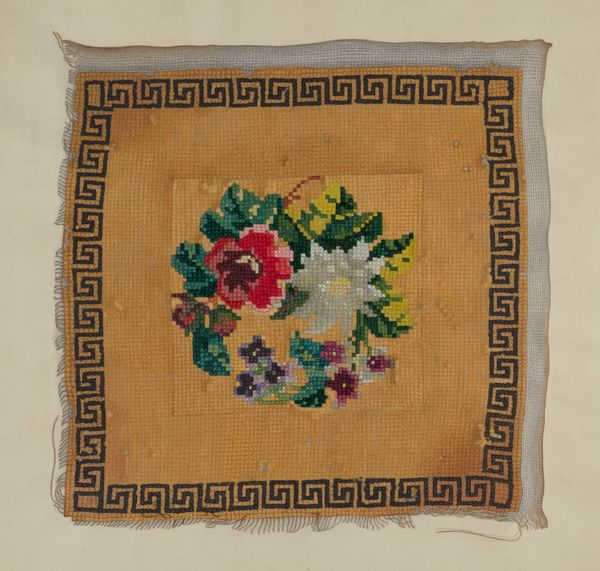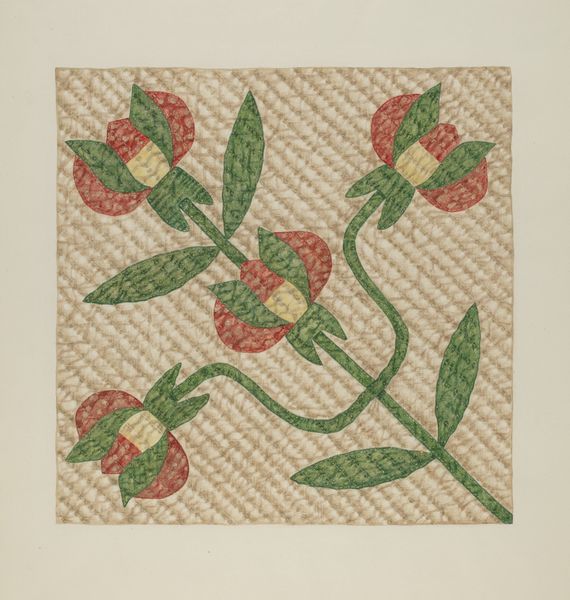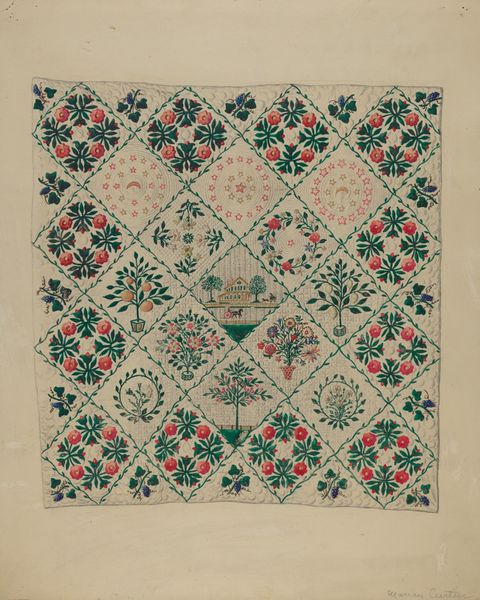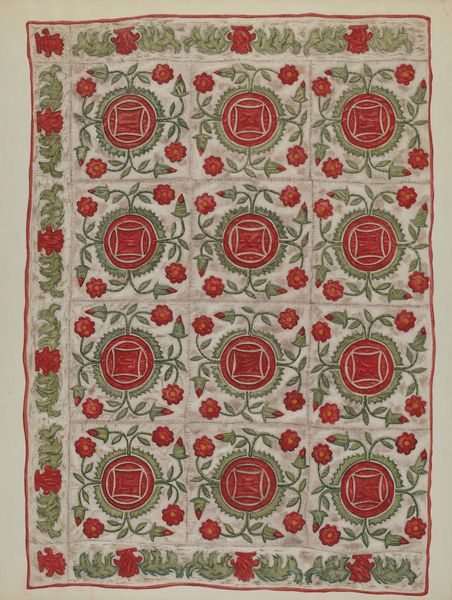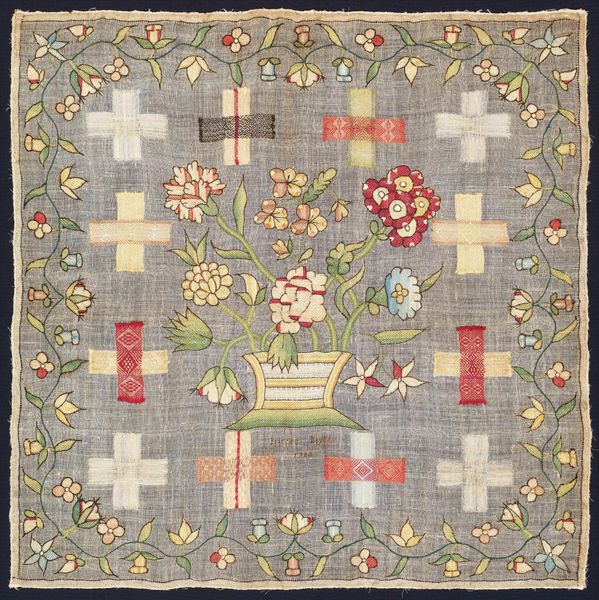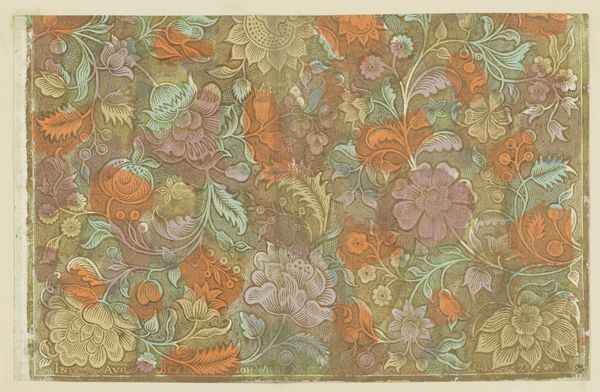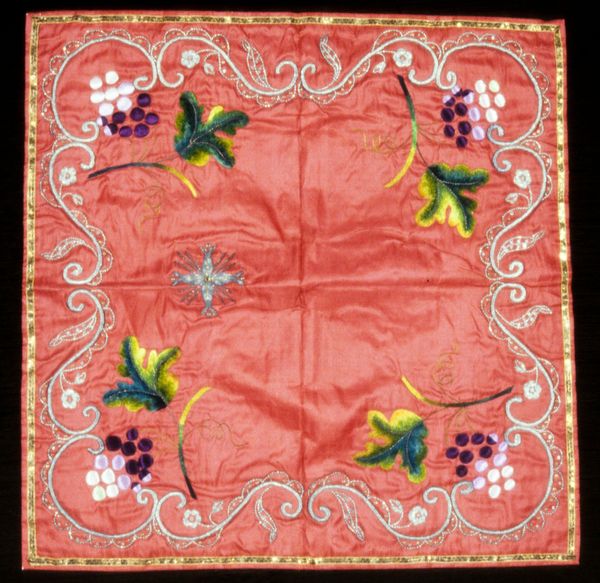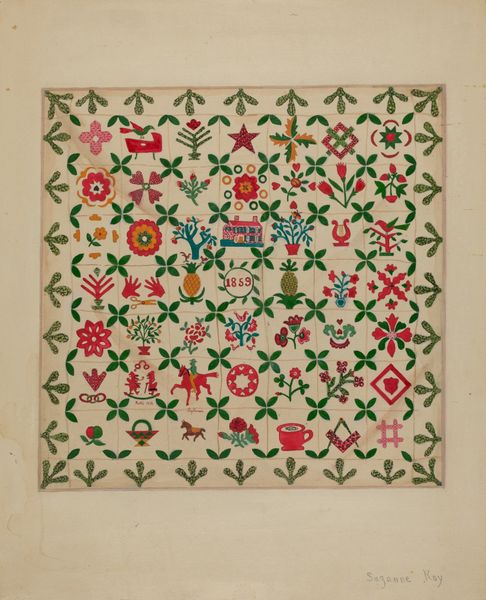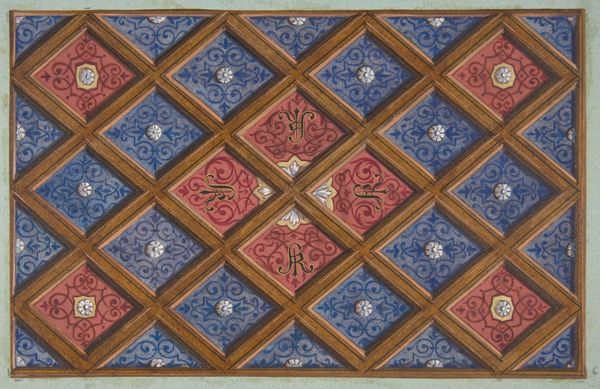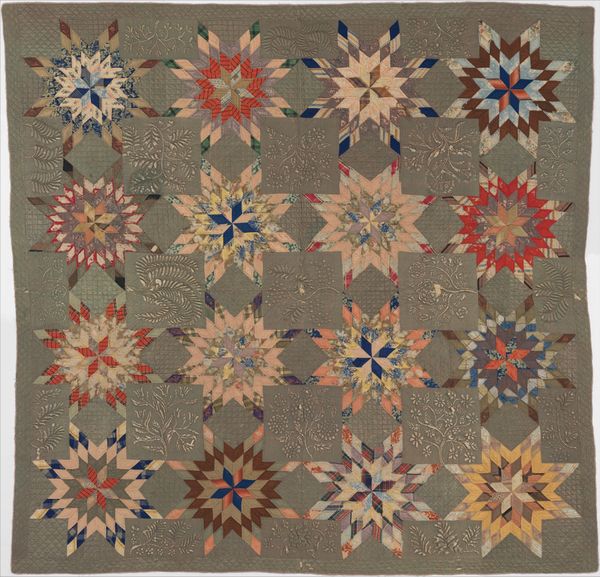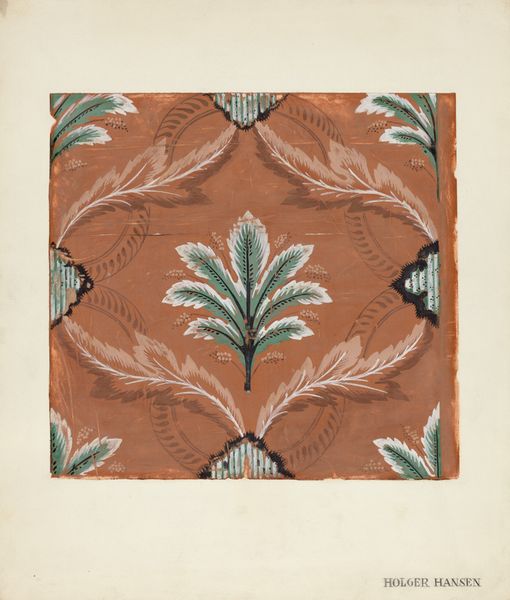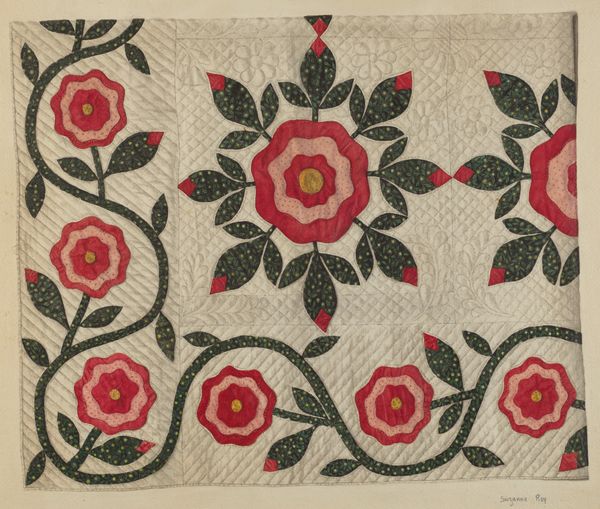
Design for wallpaper featuring flowers and latticework 1830 - 1897
0:00
0:00
drawing, paper
#
drawing
#
organic
#
paper
#
geometric pattern
#
organic pattern
#
geometric
#
flower pattern
#
decorative-art
Dimensions: Overall: 7 3/8 x 7 1/2 in. (18.7 x 19 cm)
Copyright: Public Domain
Editor: So, this is "Design for wallpaper featuring flowers and latticework" dated between 1830 and 1897, by Jules-Edmond-Charles Lachaise. It’s a drawing, possibly a print, and what strikes me is the almost medieval feel of the geometric floral pattern. What's your take on this piece? Curator: I see it as a reflection of the rising Arts and Crafts movement of the time, a rebellion against industrial production. Think about it: mass-produced wallpapers were becoming increasingly common, but artists like Lachaise were deliberately creating hand-drawn designs that emphasized craftsmanship and natural motifs. Editor: That's interesting. It feels contradictory though. Isn't a wallpaper *meant* to be mass produced? Why go to the trouble of creating a design like this? Curator: Exactly! The design becomes a statement. By embracing hand-drawing and complex floral arrangements, he's making a point about the value of individual artistry and the beauty of nature in a rapidly industrializing world. Consider also who this wallpaper was *for*. Was it aimed at the burgeoning middle class seeking affordable decoration, or at a wealthier clientele who valued handcrafted luxury? Editor: That’s a good question. It makes me think about the wallpaper designs I've seen in Victorian homes. They're so elaborate. Was that about status then? Curator: In part, yes. The intricate patterns and high-quality materials signified wealth and good taste, distinguishing the home from more modest dwellings. This design reflects that aspiration but anchors it in an ethos that valued the artist’s hand over machine production. Editor: So, this seemingly simple wallpaper design becomes a symbol of social and artistic tensions of the time? That's not something I'd have thought about at first glance. Curator: Precisely! It reveals how even decorative arts can participate in larger cultural conversations about industry, class, and the role of the artist. It pushes us to see beyond just the aesthetic and think about its place in history.
Comments
No comments
Be the first to comment and join the conversation on the ultimate creative platform.
